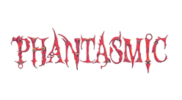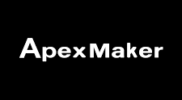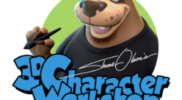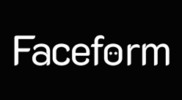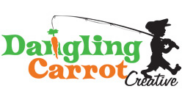
It’s not every day that an artist has their work on display at Paris’ iconic Louvre museum. To be on display in the same building exhibiting the Mona Lisa is understandable a pinnacle of achievements for a professional artist. Japanese digital artist and sculptor Yuuki Morita recently had his piece “Eternity” on display at the legendary museum. Where once the Louvre contained only works made by traditional means, oil paintings, stone sculptures and the like, Morita’s work serves as an example of the evolution of artistic creation into the 21st century. It was conceived digitally in ZBrush before being brought into the physical realm to be on display. We were fortunate enough to speak with Yuuki about how something born in ZBrush came to find a home at the world renowned Louvre.

Thanks for speaking with us Yuuki. How did you begin your career as an artist?
I’m a digital artist and sculptor based in Tokyo.
I’ve been working as a freelance environment modeler and concept artist for about 9 years, but I started working mainly on character sculptures and creature designs about 5 years ago. Currently, I’m working for clients on creature design for the VFX and game industries (creature design for the Pacific Rim animation on Netflix, Dragon Quest movie, etc.) and creature sculpting.
In addition to them, I have been showing my art piece as an artist in galleries and exhibitions around the world.
Although I was not originally trained in traditional art, I have honed my artistic skills and art style through years of working with clients in the VFX industry and creating digital sculptures.

Your most recent project is on display at the Louvre. That’s so exciting! Can you tell us about it?
The sculpture work I made last year called “Eternity” was exhibited at the Louvre in June 2021. This was really exciting for me.
I started my career as a sculpture artist around 2018, and I started by making small pieces. Gradually, I got used to the process of painting and finishing, so I started to make more works, and one of them was “Eternity.”
Originally, the exhibition at the Louvre was supposed to take place in the summer of 2020, but it kept getting postponed due to COVID19. However, I am happy to finally be able to finish the exhibition.
It means a lot to me as an artist and as a digital artist to be able to show my work in one of the most famous museums in the world, not only for me but also for the people who work in digital industry.

How did it come to be featured at the Louvre? How did you find out, what does this accomplishment mean for you at this point in your career?
About a year and a half after I started my career as a sculpture artist, I received an email. It was from an organization involved in the art fair. I immediately replied, “Of course, I will participate,” and began to work on the piece.
Two or three months later, the work was completed and shipped to Paris. During that time, I had exhibited at galleries and art fairs in New York, San Francisco, and Los Angeles, so it was not my first time exhibiting overseas.
When I first started my art career, the Louvre was a “destination far away,” so I didn’t expect to be able to exhibit my work there so soon.
Nowadays, many artists, including famous Japanese artists such as Takashi Murakami and Kohei Nawa, are using ZBrush and 3D printing to create their artworks.
However, they are still in the minority in the art market and have not been appreciated by traditional artists who place importance on materials and traditional methods. But this time, I was able to show that there is an option for artists to use digital art to develop their works in the real art market.
I am glad that I could have this opportunity to exhibit piece from digital at the Louvre as a genre of visual art, which is different from contemporary art and craft art.
How long have you been using ZBrush? Was it used for your Louvre piece? If so, how did it benefit you in your creation process?
The first time I used ZBrush was 10 years ago, when I was still in my first year of college. At that time, there were only a handful of ZBrush artists in Japan.
However, when I found out that most of the works I was interested in (mainly animals and creatures) were made with ZBrush, I immediately bought ZBrush and my sculpting career started from there.
Of course, I also used ZBrush for the work I exhibited in Paris.
Unlike traditional art, digital tools such as ZBrush allow me to focus on visual creation and modeling without having to think about anything physical. This is quite natural for me.
It is perhaps surprising to traditional sculptors that they can decide on the size of the piece after the visuals are complete. I have to be grateful for this.
What’s next for you?
I am currently working on a very large piece of artwork. In the future I would like to have solo exhibitions all over the world as well as in Japan.
It is one of my dreams to have my work installed in a place where many people can see it. It can be landscape or street public art like Hachiko at Shibuya, Tokyo. It doesn’t have to be a museum.
I would also like my work to be useful for some brand like Adidas, which I have always loved.
Also plan to continue working as an artist in my field of expertise, not only in sculpture works, but also in CGI movie works, game works, and VR works. I will be happy if I can continue to create what I want to see, and it would be great if it reaches the eyes of many people.

